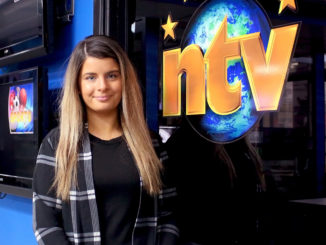Online bullying isn’t new, but it still feels overwhelming.

Henrike Wilhelm
Kicker
Online harassment isn’t a new phenomenon. Yet, lately it feels like it is more often the topic of public discussion.
For some people, social media is an unavoidable aspect of work. Journalists are active online to look for story ideas and engage with their audience. However, their social media activity often makes them an easy target for hurtful personal comments that go beyond objective judgment of their reporting.
Arzu Geybulla is an Azerbaijani freelance journalist based in Istanbul, Turkey. She teaches a distance course on online harassment at the Knight Center for Journalism in the Americas at The University of Texas at Austin.
Geybulla says research has shown a wide majority of journalists targeted online are women.
“Obviously men don’t get rape threats or they don’t get sexual messages and these kind of things. […] Women are objectified even when it comes to harassment,” said Geybulla.
“Some of the reaction was vile, actually.”
In fact, a new study by UNESCO and the International Center of Journalists shows that almost three quarters of female journalists who responded stated they have experienced harassment, threats and attacks online.
Chris O’Neill-Yates is CBC Newfoundland and Labrador’s national reporter for online, radio and TV. She agrees that female reporters are more often a target for online bullying than their male colleagues.
One of the experiences that stands out for O’Neill-Yates is the FHRITP incidence in St. John’s a few years ago. She was one of the targets and wrote a column about the issue.
“Some of the reaction [to the column that I wrote about it] was vile, actually,” said O’Neill-Yates.
Personally, says O’Neill-Yates, she’s never experienced much harassment. Yet, she knows about colleagues who have received death threats and threats of physical harm.
Geybulla knows what it’s like to be at the receiving end of death threats. She got her first one six years ago on Facebook.
While harassment often happens on social media, says Geybulla, it isn’t caused by it.
“I used to get emails, then I used to get comments under my blogpost, then I used to get comments under my articles and then once I became active on social media, it just became something where it also started happening,” said Geybulla.
Geybulla emphasizes the most straining part of online harassment is that the “wave of messages” can feel overwhelming, while in reality only one person might be behind the attacks.
O’Neill-Yates calls the effects of social media harassment “overwhelming.”
“The toxicity is sometimes kind of overwhelming and there’s often a tendency for people to pile on when someone makes a comment about a story that they don’t like that you did … and it kind of then becomes a spiral,” said O’Neill-Yates.
She criticizes the way people interact on social media and says some of the comments she has received have been “rather personal, demeaning and downright trolling.”
Especially on Twitter, says O’Neill-Yates, the situation has gotten a lot worse over the past few years. Twitter is the preferred social media platform by many journalists to look for story ideas and interact with readers and fellow journalists.
“I had no idea that what I was going through was online harassment.”
O’Neill-Yates illustrates the dilemma many journalists face regarding a withdrawal from social media. While it seems easy for people to recommend for her to delete her account, she does use the platform for work and to connect with people.
Reporting a post or tweet, says Geybulla, includes too many steps and should be made easier, since having to look at hurtful posts over and over again might be traumatizing.
“Sometimes it can be equally painful and exhausting and disturbing to reread the comments in order to report them or document them,” she said.
Geybulla notes while the problem has always existed, the awareness for it has certainly increased in the past few years.
“I had no idea that what I was going through was online harassment,” said Geybulla. “I had no idea I was not the only one when all of this was happening and now obviously I react very differently and I know what to do.”
“I don’t want to say that it’s part of the job, because it shouldn’t be part of the job, but I do think that everyone needs to prepare themselves for this possible experience.”
It helps, Geybulla says, to publicly speak up about the problem and not to take hateful comments to heart.
“As soon as you start getting it personally, you are pushing yourself down the rabbit hole and to get out of that place is really difficult,” she said.
O’Neill-Yates agrees this is a helpful approach. Hurtful comments, she says, have somewhat become part of being a journalist.
Geybulla agrees that budding journalists have to prepare themselves for online harassment.
“I don’t want to say that it’s part of the job, because it shouldn’t be part of the job, but I do think that everyone needs to prepare themselves for this possible experience because as ugly and nasty as it is, it is something that potentially may happen,” said Geybulla.




Be the first to comment